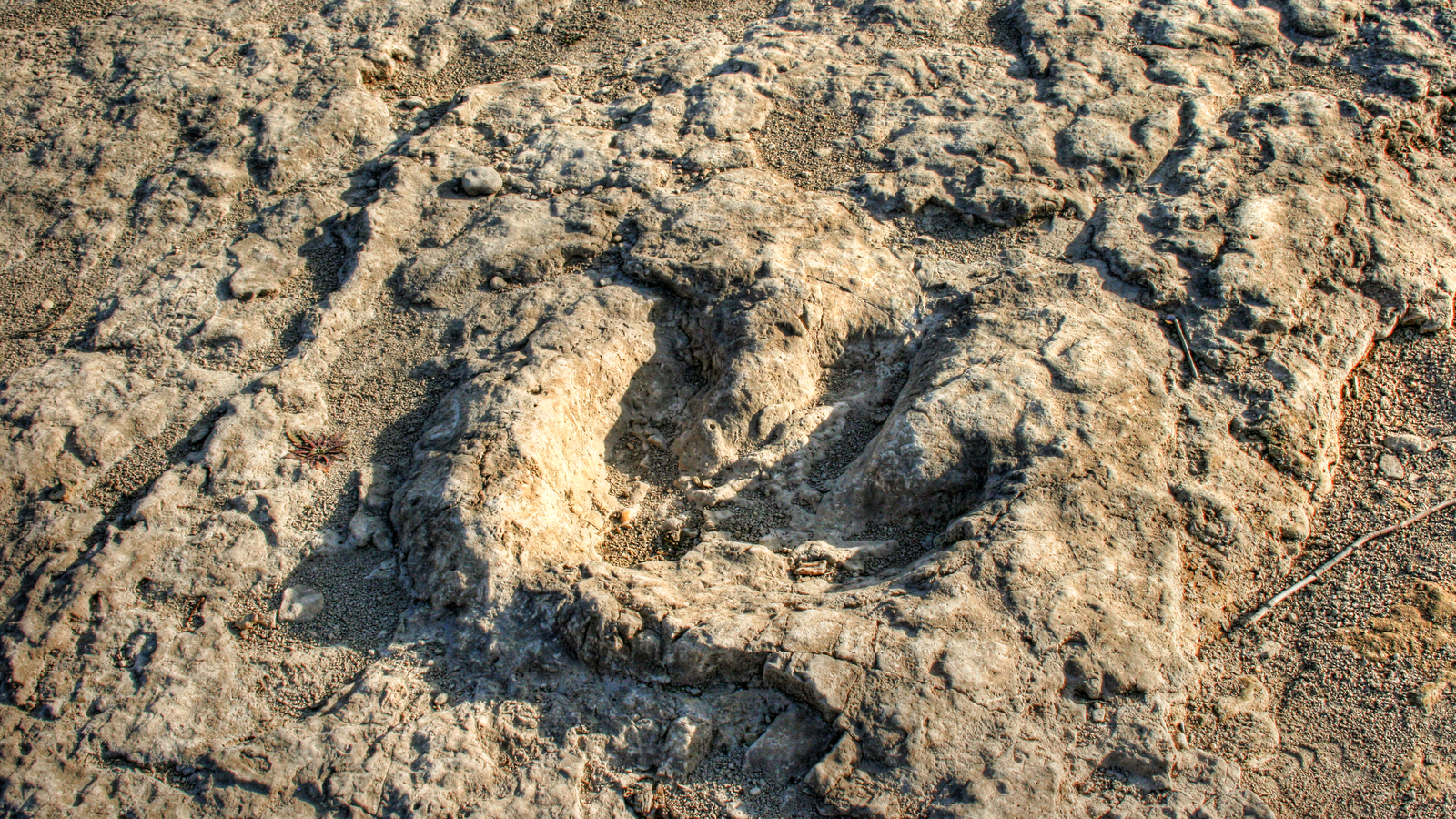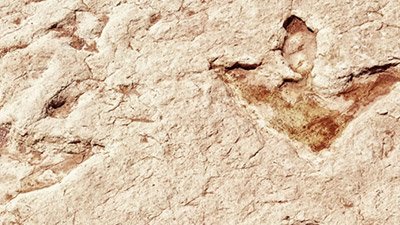Dinosaur Pursuit?
Fossils are not only bones, but any remains of dead organisms, including tracks.
Fossils are not only bones, but any remains of dead organisms, including tracks. A set of dinosaur tracks along the bank of the Paluxy River, Central Texas, may tell us something about how they walked and ran.
For example, large mammals like elephants often land the hind foot on the spot the front foot has left. This is possible because both feet on one side can be off the ground at once. But modern reptiles move the diagonal legs together, that is, the front right leg together with the hind left leg, and vice versa, so its tracks are different. However, although dinosaurs were reptiles, the tracks of large four-legged dinosaurs showed they moved much like living mammals and not like living reptiles.
Also, modern meat-eating mammals, when pursuing much larger prey, often match their stride and speed before attacking. This minimises the relative motion of predator and prey, and lessens the chance of injury. These tracks from Paluxy include those of a theropod (two-legged carnivorous dinosaur)—maybe the 2-3 ton Acrocanthosaurus—running parallel to the much larger sauropod (huge four-legged dinosaur)—maybe Pleurocoelus —and showing this pattern. There is also evidence of a ‘hop’ by the carnivore and a drag mark by the herbivore, maybe indicating an attack.
D.A. Thomas and J.A. Farlow, ‘Tracking a Dinosaur Attack’, Scientific American 277(6):48-53, December 1997.
- We weren’t there, so we can’t know for sure(cf. Job. 38:4).
- The fossil record shows death and sin, so must have formed after Adam’s sin.
Recommended Resources

Answers in Genesis is an apologetics ministry, dedicated to helping Christians defend their faith and proclaim the good news of Jesus Christ.
- Customer Service 800.778.3390
- Available Monday–Friday | 9 AM–5 PM ET
- © 2025 Answers in Genesis





